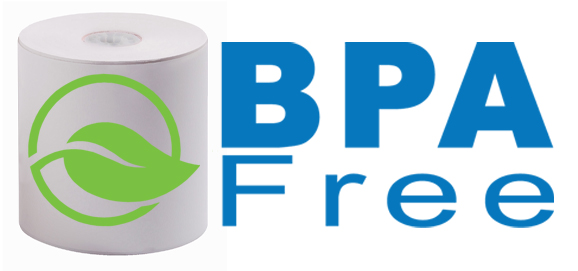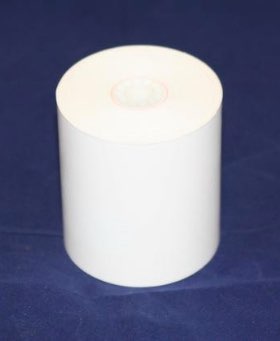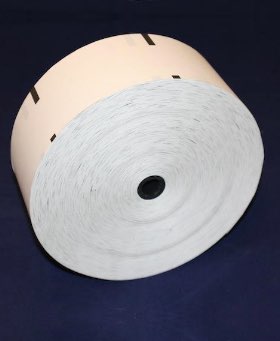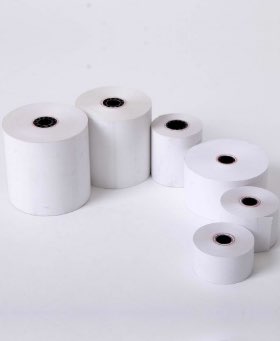
Topmost Facts About BPA-Free Paper To Consider In 2021
Bisphenol A (BPA) is a synthetic chemical discovered in 1891, used as a color developer in thermal paper. However, there were concerns about the health impact of BPA as preliminary studies showed it could affect humans.
As a result, there was a clamor to remove BPA from thermal paper to stop the transfer of the chemical to people, giving rise to BPA-free paper. This guide examines all facts you need to know about BPA-free receipt paper.
What is BPA Free Receipt Paper?
While the science discrediting BPA is straightforward, what was not was whether BPA in thermal paper could pass on to humans. Recent studies put that to bed as it clearly showed transmission to humans using BPA thermal paper, justifying the need for BPA-free paper.
BPA-free receipt paper refers to thermal paper manufactured using alternative color developers that do not contain the BPA chemical. That gives you confidence you won’t have to interact with the potential hazard from BPA thermal paper.
Why does BPA matter?
BPA gained popularity in the 60s.
However, there’s a big shout to have it purged from products. Here’s why:
- BPA is potentially dangerous
Research shows it can affect the brain, behavior, and prostate glands of children and fetuses. Further investigations revealed a link between BPA and type 2 diabetes, high blood pressure, cardiovascular diseases, and cancer.
- Federal and state governments are banning it
In 2012, the federal government followed the lead of 11 states that banned BPA use in sippy cups and baby bottles. The FDA also banned BPA use in infant formula packaging in 2013. There are currently about 14 states that have regulations on BPA use in consumer products.
That said, the FDA asserts that the BPA levels in most products are too low to be a health concern. The FDA has conducted hundreds of studies and concluded that the BPA that makes it into our foods does not reach the dangerous threshold; therefore, it’s safe.
It’s worth noting that most plastic goods manufacturers are systematically eliminating BPA use in their products, with or without regulation. The FDA is still conducting a further evaluation on the effects of BPA.
If you do not feel comfortable about BPA-laden products, follow these steps to reduce exposure:
- Use BPA-free receipt paper – look for BPA-free labeling.
- Cut back on handling BPA paper – instead of handling receipts, verify the transaction on the display screen
Who are mostly affected by BPA
- Children
A study by the CDC showed that BPA presents itself in more than 92% of Americans, with children displaying the highest levels. Which isn’t surprising considering its widespread use in children products such as:
- Some pacifiers on their hard outer shields
- Infant formula with BPA lined containers
- Some plastic toys
- Baby utensils and food containers, such as baby bottles, cups
- Cashiers
They constantly hand over receipts to customers, throw them into bins, or load them into the receipt machines. Since receipts contain high levels of BPA, it’s no wonder cashiers generally have the highest amounts of BPA among the adult population.
- Medical workers
Surprisingly, BPA is present in many of the products that medical workers interact with on a daily, including:
- Implants
- Catheters
- Endoscopes
- Pacemakers
- Eyeglass lenses
- Dental filling sealants
BPA Free Thermal Paper reduces potential health risks
While the Springer-Verlag research found that anyone who constantly handles receipt paper containing BPA only gets exposed to a dosage that is 42 times lower than the tolerable daily dose, it still pays to be cautious. Since it is an endocrine disruptor causing infertility and hormonal disruption and affecting infants the most, it makes sense to protect your workers’ and client’s health and provide peace of mind by using BPA free receipt paper.
BPA free papers are environment friendly
Unlike ordinary thermal paper containing BPA, BPA-free paper cannot cause the same harm to humans, however remote that could be.
Even when you recycle BPA thermal paper, the phenol can end up in wastewater or contaminate other paper in the recycling stream. The BPA-free paper does not pose such dangers.
For those reasons, experts recommend that you do not decompose thermal paper as the chemicals may leach into the soil and contaminate food and water sources, something BPA-free paper won’t do.
BPA Free Thermal Papers are Recyclable
Experts recommend you not place thermal paper in recycling bins. They might contain BPA that will pollute the environment.
Since almost 90% of thermal paper uses BPA, and its production uses more than 12 million trees and 13 billion gallons of water yearly, it makes sense to use BPA-free paper because it’s like ordinary paper, which is recyclable.
The BPA-free paper does not contain the BPA and phenol chemicals that recyclers will not accept for recycling.
Why do I need BPA Free Thermal Paper?
While the primary way BPA comes into your body is through consumption, a study by toxicologists at the French National Institute for Agricultural Research in Paris showed that about half the amount of BPA in your body passes through your skin.
That’s why you need to make the push to have BPA free receipt paper. Research also proved that people who handle BPA-laden receipt paper have the highest levels of the chemical.
It gets absorbed into your body almost instantaneously, as that study showed people without BPA had their urine test positive for BPA a few hours later. Similar studies show that BPA appears in your body just four hours after exposure.
How to choose the best BPA Free Thermal Paper Rolls?
If you prefer BPA-free paper, ask your supplier to get you the thermal paper that does not contain BPA or BPS. You could opt for urea-based thermal paper or standard paper type.
Rolls Size: the most common is 31/8 thermal paper”, but you can order in other roll sizes, including 2¼”.
Brand: the leading BPA free receipt paper brand is Graphic Tickets & Systems. Visit our online store for a wide selection of thermal paper receipt paper.
Price: Start from as low as $15.99 per carton to $69.99.
Also Read: Difference Between Carbonless and Thermal Receipt Paper – Facts You Need to Know
What about the cost of BPA Free Thermal Paper?
Although taking safety measures such as switching to BPA free thermal paper is encouraged, one of the primary concerns that business leaders have about switching to safer products is the cost. Fortunately, most BPA free thermal paper suppliers offer this product for around the same price as “standard” thermal paper rolls containing BPA.
Protect your employees, customers, and your business with BPA-free thermal paper
At Graphic Tickets & Systems, our mission is to Make Every Transaction Count. This includes providing customers with the safest thermal paper products available. Please contact us to discuss our BPA-free thermal paper or to receive a free quote.

















